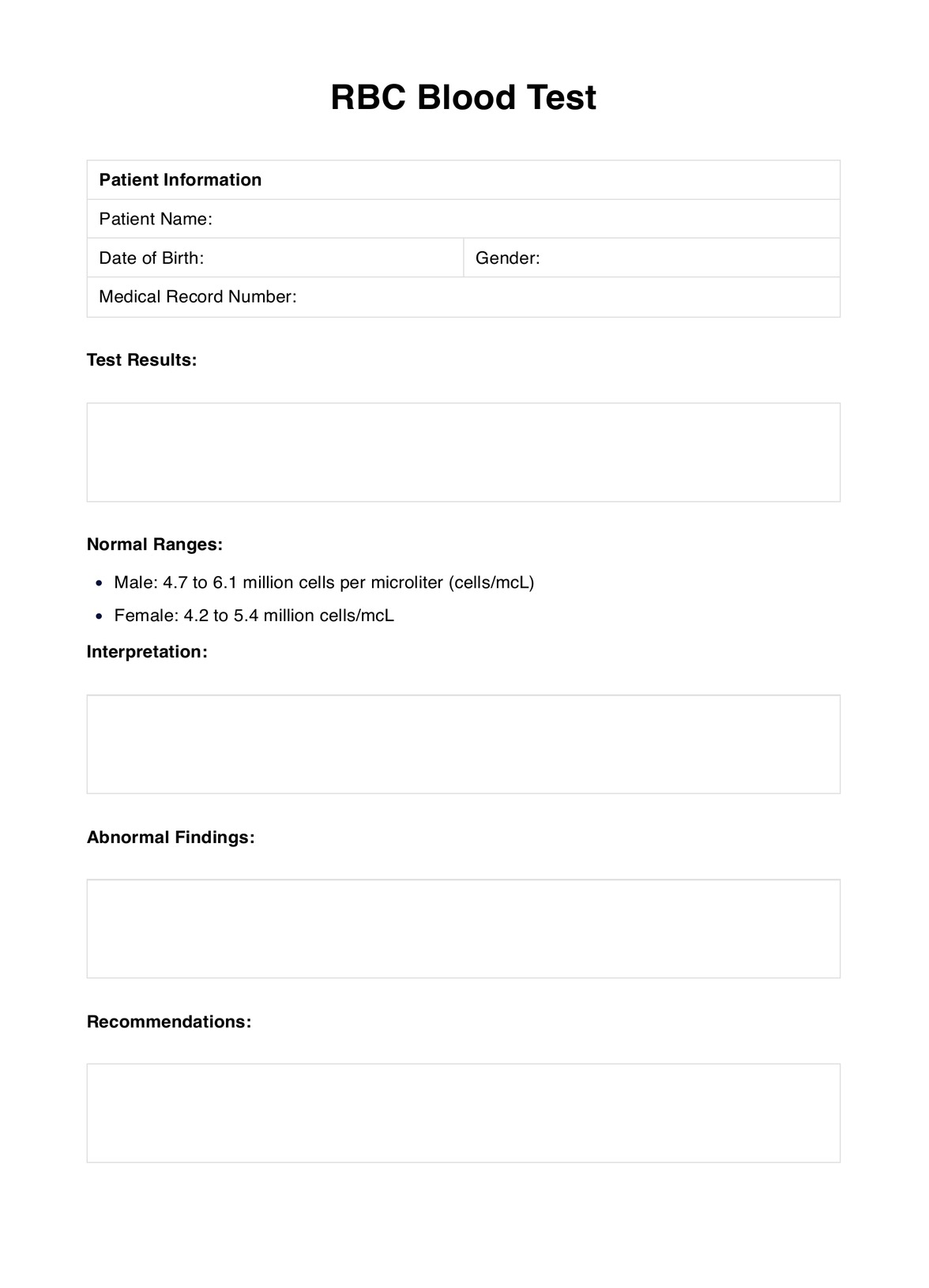These tests are typically requested by healthcare providers, including general practitioners, hematologists, and specialists, to diagnose and monitor conditions related to red blood cells.

RBC Blood Test
What does the RBC Blood Test reveal? Explore the significance of RBC counts and their implications. Download the resource today!
Use Template
RBC Blood Test Template
Commonly asked questions
These are used when a patient exhibits symptoms of anemia, unexplained fatigue, or suspicion of underlying medical conditions affecting red blood cells, such as anemia, polycythemia vera, or sickle cell anemia.
The tests involve drawing a blood sample from a patient's vein, which is then analyzed in a laboratory. The test measures the number, size, and shape of red blood cells, providing valuable diagnostic information.
EHR and practice management software
Get started for free
*No credit card required
Free
$0/usd
Unlimited clients
Telehealth
1GB of storage
Client portal text
Automated billing and online payments











